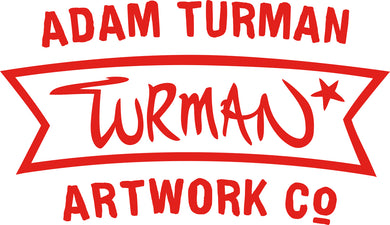About Screen Printing
Screen printing is a printing technique where a mesh screen is used to transfer ink onto a substrate (in this case paper), except in areas made impermeable to the ink by a blocking stencil. A blade or squeegee is moved across the screen to fill the open mesh with ink, and a reverse stroke then causes the screen to touch the paper momentarily. This causes the ink to wet the paper and be pulled out of the mesh as the screen springs back after the blade has passed. One color is printed at a time, so several screens are used to produce a multicolored image.
There are various terms used for what is essentially the same technique -- serigraphy, serigraph printing and screen printing or silkscreen printing because silk was used in the process. The most popular screen mesh in general use is made of polyester.
Adam also uses a stainless steel screen for printing the metallics on the Woodland Series. Variation in the mesh size will increase or decrease the amount of ink that will be transferred to the substrate.
Each screen print is slightly unique because of the hand-quality of screen printing process. All screen prints are open editions (not limited by numbers) and hand-signed and dated by Adam.
Overall, these works are an original art form-- not a reproduction. Cheers!
Common Questions About Screen Printing
What is screen printing?
Screen printing is a printing technique where a mesh is used to transfer ink onto a substrate, except in areas made impermeable to the ink by a blocking stencil. A blade or squeegee is moved across the screen to fill the open mesh apertures with ink, and a reverse stroke then causes the screen to touch the substrate momentarily along a line of contact. This causes the ink to wet the substrate and be pulled out of the mesh apertures as the screen springs back after the blade has passed.
What materials can be screen printed on?
Screen printing can be applied to a wide range of materials, including textiles, ceramics, wood, paper, glass, metal, and plastic. This versatility makes it a popular choice for various applications, from clothing and posters to electronic circuit boards and product labels.
What types of ink are used in screen printing?
The type of ink used in screen printing depends on the substrate and the desired effect. Common types include plastisol (popular for textiles), water-based inks (eco-friendly and soft on fabrics), and UV inks (which cure under UV light and are great for non-porous surfaces). Solvent-based inks are used for industrial applications where durability is crucial.
How long does screen printing last?
The durability of screen printing depends on the type of ink used and the substrate it's printed on. For example, plastisol inks on textiles can last for dozens of washes without fading when properly cured. Screen prints on hard goods, like signs and electronics, can endure for many years under typical exposure conditions.





